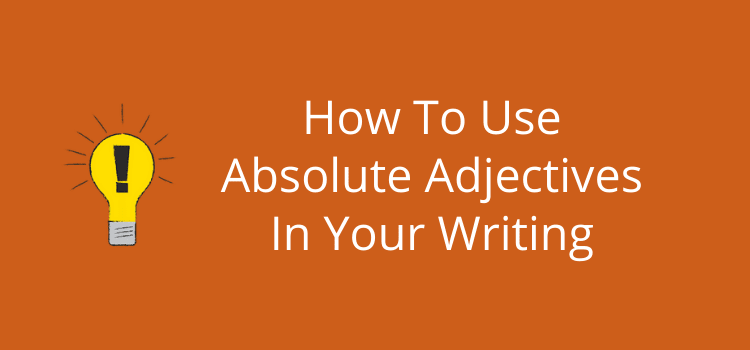
Yes, double negatives are usually a big mistake in writing, but there are certain situations when you can use them effectively.
In school, you probably learned that double negatives are always wrong. But that’s not entirely true.
Surprisingly, there are particular situations when you can use them for emphasis, politeness, or to express a lack of certainty. Another instance is for you to create parallelism in a sentence.
In this article, I’ll outline how we form double negatives and when and when not to use them in your writing.
What are double negatives?
A double negative occurs when two negative phrases or terms are in a single sentence. The most common form is when there is a negative verb with a negative pronoun, adverb, or conjunction.
Here are some simple examples.
I didn’t go nowhere at the weekend. (Negative verb + Negative pronoun)
She said she wasn’t never going to see him again. (Negative verb + Negative adverb)
They didn’t eat neither the main nor the dessert. (Negative verb + Negative conjunction)
For these example sentences, the simple correction is to remove the second negative component.
I didn’t go anywhere at the weekend. (Negative verb + Positive pronoun)
She said she wasn’t ever going to see him again. (Negative verb + Positive adverb)
They didn’t eat either the main or the dessert. (Negative verb + Positive conjunction)
You can find a lot of examples and corrections online. But Northern Illinois University, in particular, has a page that gives a simple explanation, examples, and corrections of double negatives.
When can you use double negatives?
There are certain uses for double negatives where they are clearly not grammar mistakes. One of the simplest uses is when a single negative makes no sense.
I can’t do your job indefinitely.
It wouldn’t be unheard of to ask for a pay increase.
In these two examples, you couldn’t use the positive words, definitely, or heard.
In the following form, they are often called litotes, meaning ironic understatement.
It’s not unusual to be asked to work long hours.
I’m not unhappy with my job; I’m just tired.
He’s not being inflexible but simply being honest.
The Cambridge Dictionary says this about using double negation when expressing something cautiously.
We can use not + an adjective or adverb with a negative prefix (e.g. un-, in-) as a way of softening or downtoning the meaning of the adjective. The meaning becomes affirmative, but the double negation shows that the writer/speaker is cautious about it.
Examples
It’s not unreasonable to expect longer hours now.
I’m not indifferent to your plan.
My manager’s refusal was not unexpected.
Well-known double negation
In music, there are many examples that we all know.
I Can’t Get No Satisfaction – The Rolling Stones
We don’t need no education / We don’t need no thought control – Pink Floyd
Ain’t No Sunshine – Bill Withers
You Ain’t Nothin But A Hound Dog – Elvis Presley
I’ll never do you no harm – The Beatles – From Oh! Darling
Ain’t No Mountain High Enough – Marvin Gaye
The negative verb ain’t is very common in song lyrics.
It is often used with negative words such as no, no one, or nowhere because it fits the rhythm better than there isn’t or there wasn’t.
Literature abounds with the use of the double negative to create emphasis.
“A plastic cup filled with a liquid that was almost, but not quite, entirely unlike tea.” – The Hitchhikers’ Guide to the Galaxy – Douglas Adams
“Ther nas no man nowher so virtuous.” – The Canterbury Tales – Geoffrey Chaucer
“And that no woman has; nor never none shall be mistress of it.” – Twelfth Night – William Shakespeare
Parallelism with two negatives
Parallelism is when a sentence repeats the same grammatical structure.
A good example is this famous quote by Winston Churchill.
“Never give in, never surrender.”
But as Merima Osmankadić (see reference) points out, parallelism is also possible with two negatives.
It was unexpected but not unwelcome.
Another is:
Unlikely if not impossible.
Emphasis or clarity of meaning
In some situations, using two negatives adds a particular meaning or sense.
For example, I don’t disagree with you; says almost the same as I agree with you.
However, the first phrase emphasizes the fact that you are not in any disagreement but also that you may have reservations.
Another example might be that I don’t regret not enrolling in university.
It emphasizes that you are quite happy about the fact that you didn’t enroll.
If you say your leadership skills have not gone unnoticed, it deliberately stresses that your skills were noticed.
The phrase, there’s nothing I can’t do, means I can do everything, but it accentuates the fact of complete mastery.
The escape clause
Politicians especially like to use two negatives to ensure that they can walk back a statement if necessary.
It’s not unlikely that there will be a change of Prime Minister soon. (It’s highly likely, but I don’t want to say so.)
A budget correction statement is not inconceivable. (There will be a correction statement, but it’s not for me to say.)
It’s never irresponsible to review our policies. (Yes, we might have to change them.)
Double negatives – handle with care
Yes, double negatives are usually a mistake in writing. In most cases, you should edit and rewrite a sentence.
However, there are some specific situations where they are possible.
If you want to use them in your writing, take extra care. It is not easy to know when, why, and how to use double negatives.
In fact, they are often much more difficult to write than positive phrases.
Related reading: Comma Before Such As For Nonrestrictive Clauses
Share This Article


